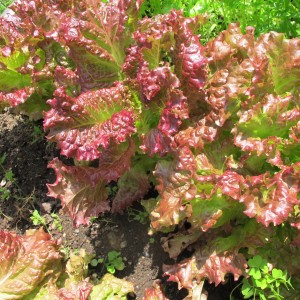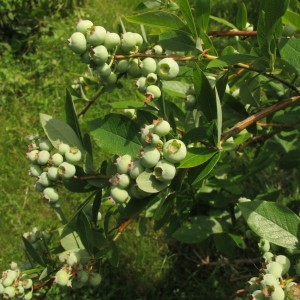There’s Plenty to Do in the Vegetable Garden
I got an inquiry recently about vegetable gardens: is it too late to start one? In a word, no. But you will have to act quickly if you want one because most garden centers are just about sold out of vegetable starts, though many still have large individual tomato plants in pots for sale. But even if you don’t find 6-packs of tomatoes or peppers for sale, many things can be started now by seed (though it is too late to start tomatoes and peppers from seed).
I planted 6 Hungarian wax hot pepper plants in early June, and quite frankly they look awful. Peppers like hot weather, and we haven’t had as much as they’d like. If I see some nice hot pepper plants for sale I’ll buy them – but I’ll plant them in big planters, not in the ground. Then if they are doing well in the fall, I can bring them indoors when it starts to get cold. I know a fellow who keeps hot peppers growing inside most of the winter.
Broccoli does well in the fall, and I often plant it by seed in mid-July. I prefer to start seeds in 6-packs rather than in the ground, but either way works. By planting seeds in multi-packs I can keep an eye on the seedlings better, and control how much moisture they get.
Lettuce is a crop that needs regular re-planting. I like to start lettuce every couple of weeks all spring, summer and fall. Read the seed catalogs or packages carefully – some kinds of lettuce do better in the heat of mid-summer than others, and most companies will tell you which varieties do best in the heat. I recently called Johnny’s Selected Seeds in Maine (www.johnnyseeds.com) to see what they recommend. I was told that Romaine types are the most heat tolerant, things like ‘Muir’, ‘Concept and ‘Nevada’. I’m trying these, and I’ll report back in the fall on how mine did.
If you want to grow lettuce in mid-summer, plant it in places that get some shade in the afternoon – on the east or north side of the corn or tomatoes, for example, or shaded by a tree or building. And be sure to keep the soil moist – you will need to water lettuce during hot, dry times – especially just after planting seeds.
You can start carrots and beets for fall crops now, too. Carrots need a deep, loose soil, so work in plenty of compost and pull out the rocks before planting to get long, beautiful carrots. Raised beds work great for carrots because you can easily build up a deep fluffy soil.
It’s good to thin and weed spring plantings of carrots and beets by the Fourth of July. They should be thinned to an inch apart by now. And carrots, which require quite a lot of nitrogen in the soil for best results, can benefit from a topdressing of fertilizer now. I sprinkle some Pro-Gro organic fertilizer alongside each row of carrots, and then lightly scratch it in with my favorite weeding tool, the CobraHead (www.CobraHead.com).
It’s not too late to plant a (second) crop of green beans, either. Plant seeds directly in the ground an inch deep and 3 inches apart in staggered double rows that are at least 18 inches apart. Or you can plant pole beans, which take up less garden space and keep on producing all summer. Bush beans produce a heavy load of beans over a 3 week period, and then they’re done. That’s great for freezing, but I like some pole beans for daily consumption. ‘Kentucky Wonder’ is the tried-and-true classic pole bean.
Cilantro and dill are herbs that tend to bolt (go to seed) fairly quickly. But you can re-plant seeds now for a constant supply. I forgot to plant basil seeds this spring, but bought some nice young plants in 4-packs recently. But if your plants are big and are starting to flower by now, be sure to pinch the tops back. Basil gets bitter when it flowers. The more you pinch it back (or cut off big sections of leaf), the more it will bush out and produce more leaves.
My blueberry bushes are doing well this year and are loaded with small green berries. This is a good time to weed out the space around the bushes and put down some ground bark or wood chips to keep the weeds down. Right after blooming is a good time to add some fertilizer, but even now would be fine. Blueberries need very acidic soil, so use a fertilizer like Holly-Tone or Pro-Holly that has sulfur in it. Or sprinkle some garden sulfur around the bushes after you weed them out and before mulching.
My work in the garden is never done. But that’s okay – having a few weeds keeps me out of trouble – there’s no time for mischief.
Henry Homeyer is a gardener, gardening coach, and the author of 4 gardening books. His web-site is www.Gardening-Guy.com.




